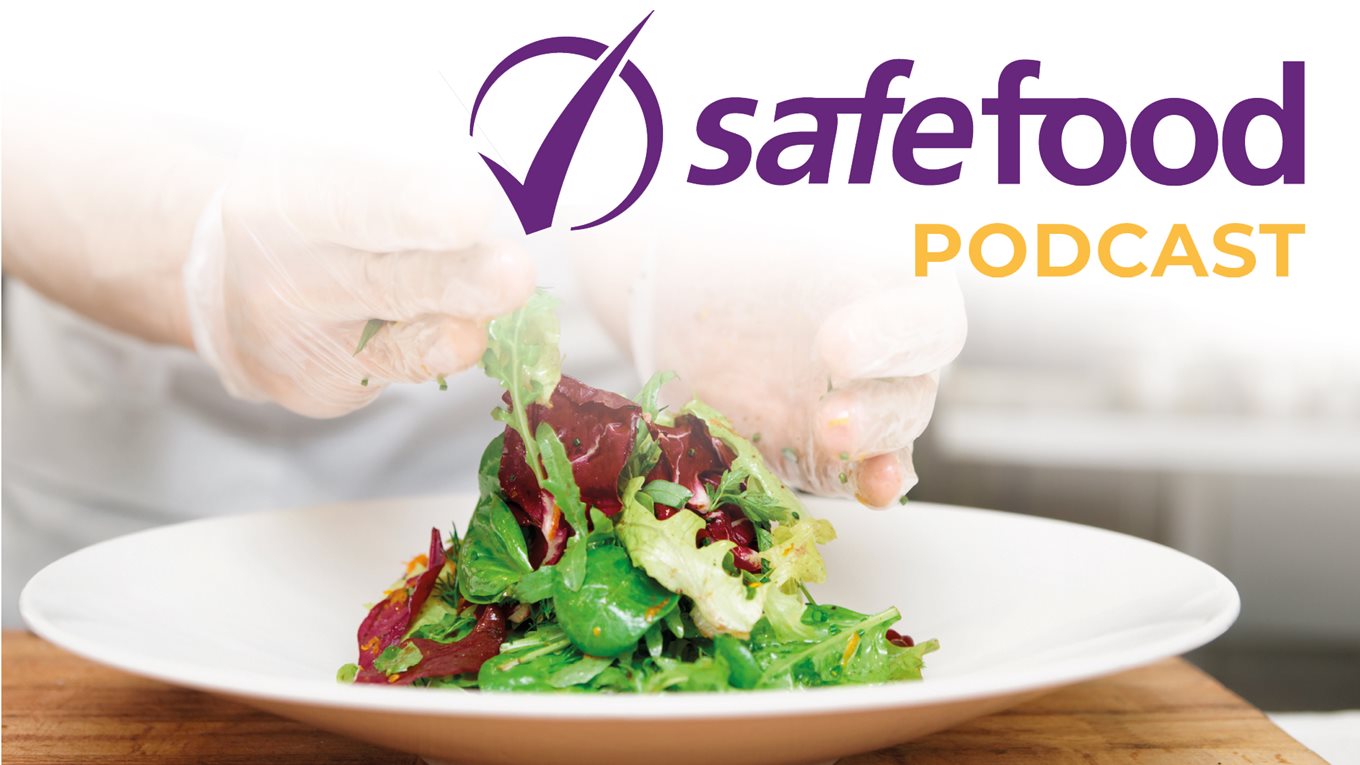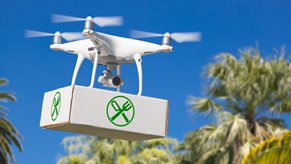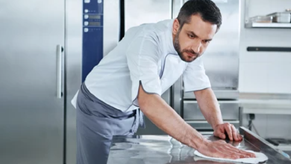Transcript: From research to resources

You're listening to the safefood podcast
Hello and welcome to the safefood nutrition podcast. I'm Dr. Aileen McGloin, Director of Marketing and Communications at safefood , the all-island agency promoting food safety and healthy eating. On this podcast we talk about nutrition issues like obesity, food, poverty, sustainability and health in the media. Today we look at the importance of research and how it translates into practical resources and communications for the general public. This is an area I'm passionate about and I've been involved with throughout my career. To talk about this, I'm joined by Dr. Charmaine McGowan, Scientific Officer at safefood and dietitian Sara Keogh runs Eatwell, a food and nutrition consultancy for the food industry and for the public. So welcome to you both. Charmaine, if you don't mind, I'll start with you. Can you explain to our listeners safefood 's role in research?
Charmaine: Thank you, Aileen, very much. Lovely to join you and Sarah today. safefood has a very important role to play in research on the island of Ireland. We commission or fund a wide range of research. And this involves addressing gaps in knowledge related to food safety or food hygiene, nutrition, healthy eating. We want to have local knowledge that's relevant to the population on the island of Ireland, up to date information and we use the outcomes from the research to inform policy and to support others working in the area. It's really important underpinning for our communications with consumers. Really important to to make sure that everything we do is credible and robust. And then another very important aspect of the research program that's run by safefood is to develop capacity on the island environment, and to promote collaboration between researchers on the island and further afield. And you mentioned commissioning research so it might be useful for our listeners to hear a little bit more about the process of commissioning safefood 's research as well, if you don't mind, and it's a wonderful thing to be able to say that we have a very active research program in safefood and that gives us the opportunity to select different research topics that address issues that are important, really, for the health and wellbeing of the population. That's what we're about and how we go about selecting new research projects, that is informed by conversations with partners including government departments, keeping a tight eye on published literature and public health, nutrition and data on the health of the population which might steer us in a particular direction. Sometimes research is commissioned in response to a particular need, or a new issue that arises, or a particular request that comes in. We have in our portfolio on our website, over 130 research projects that we've commissioned since safefood was set up. It's a great achievement really. And it's testament, not only to those of our colleagues who administer all this work, but the researchers who deliver the goods for us, to give us that important data and to help shape what we do.
Aileen: And of course, the story doesn't end with the research reports. This is where your team, and nutrition and my team in communications begin to collaborate. So would you mind just describing the process of what happens? Once we receive a report into say food and how it goes on to become whatever output? It is at the end?
Charmaine: Yes, well, we're all very familiar with the concept of reports gathering dust. So we have enough shelves covered with reports. So we want to, we have a duty I suppose really, to make sure that we act on the recommendations for any report that comes in. And that might involve sharing the findings with the public in the form of a press release or with policymakers, and involves also developing materials for campaigns or for particular audiences and all the while cognizant that we want to encourage and support people at all ages and stages, with food safety and healthy eating behaviors.
Aileen: And I think, Charmaine, that a particularly interesting example of our work is the video series that we've developed following our report. What parents think of weaning? Can you talk through the journey from research to resource for that particular series of videos?
Charmaine: I'd be delighted and that was a very nice piece of work that we commissioned a number of years ago. So this can take a little bit of time, but the starting point is we know that weaning babies from milk to a solid based diet, to introducing complementary foods, it can be a great experience for parents and caregivers, but it also can be a challenge. There are recommendations in terms of what time to wait with what types of food to wean and we know the parents have been doing this for a long time. So you might wonder why we're doing a research project on weaning. So the literature is this: plenty of literature on parents' experiences, but we identified a gap in the literature in relation to what influences or shapes the practices of parents on the island of Ireland. We looked particularly, worked particularly with parents who are socially disadvantaged, because it's important that our work address health inequalities. This aspect of the research was really well considered by the principal investigator Dr. Colette Kelly from National University of Ireland in Galway and Colette worked with collaborators from Queen's University in Belfast and University College Cork. So were asked what way we'd do the translation piece in relation to this work?
So the first thing we need to understand is where people are coming from, what the barriers are and what can facilitate a particular outcome, facilitating particular desired behaviour. And this holds really no matter what the topic is be it weaning or any other topic related to food safety or healthy eating. So the outcomes were from 19 focus groups held throughout the island of Ireland. Parents told the researchers that choosing baby foods can be challenging, things like they're a bit worried is the food too lumpy, is too hard for the baby to digest. What about choking? Another really challenging issue was everybody knows, or has an idea of, what they should be doing. And that again, is very commonplace, and there can be very good advice as we all know from from reliable and unreliable sources. You know, people giving us guidance on what to do, the challenge all the while that leaflets come through but we might get them at a particular point in time, we might not read through them, that might be lost. We just might not be in the headspace to get information on a particular topic at a particular point in time. So parents said this was really big part of the guidance in relation to weaning and there is guidance from both the public health agency in Northern Ireland and from the Health Service Executive. And health professionals do give out a lot of guidance to parents when they have new babies. But that's not the opinions and the attitudes. One one parent said they were really nervous about weaning, I put it off I didn't know when to wean or what time of the day. How much pureeing I should do? I didn't know whether should give the baby a bottle first before I started giving the food. And parents also told us that weaning can highlight feelings of guilt or inadequacy. I'm not sure what I'm doing here. Everybody else might know what they're doing. And also parents base their decisions on their own present circumstances. So we had their really really rich data from parents on the island of Ireland and we set about using this data what are we going to do with this data? How are we going to act on it? There's guidance there already and how do we complement that guidance from other partners on the island? So we commissioned these videos which Sara is going to speak about that are really short and easily accessible. They demonstrate the practicalities as babies move through the different stages of weaning. And from watching the videos, I'm sure you'll agree that the style is very empathetic. Because we know that parents really want to do their best they want to nourish their families. And another really important aspect is parents want to follow guidelines. So I think the videos do this very well, to support and enable parents, that's the thing in a nutshell. From commissioning, through to the findings, through to what next step.
Aileen: Great summary Charmaine, thank you and you mentioned that Sarah stars in our videos so Sarah if you don't mind, I'll come to you. And why do you think these kinds of videos, these kinds of resources like the videos, are particularly important?
Sarah: I think the videos are fantastic because they're so visual. And you know, when you start actually wean your own children and you're kind of, everyone is thinking, what is it to thin, what does that look like, whereas the video actually shows you. And I think giving people that visual they can be very reassured that actually they're on the right track, and I think Charmaine said one of the things is parents go "when do I move into the lumpy food and is it too lumpy and are they going to choke? And you know, a lot of parents are terrified - and they are - of doing it, or doing it wrong, or getting confused, and I think the video was lovely because it gives people, I suppose, an expert kind of voice in that it's coming from safefood. It's very reliable and you know, cuts through a lot of the noise on weaning. I would do a lot of talks with parents on weaning, and some of the questions I'm asked, I think, where did you even hear some of that information and no wonder you're terrified! So I think the videos are brilliant because they're also there at any time. You know, we talked about giving leaflets and you might put it down and you might lose it, but everyone has a phone in their hand. You know, they can go through they can find the video, they go, right. I'm doing stage one today, what do I need to do? And plus the videos are short, they're straightforward, and they really just I think communicate very well what we're trying to get across for parents. I think more than anything else, it's reassurance, because most parents do know what to do. I think they just doubt themselves. And I think our videos will give people the support to go to actually I've got this.
Aileen: I'm going to take you a step backwards. Just to the the origins to the research itself. Why is this kind of research so important to you as a dietitian working in practice?
Sarah: Well, I think one of the things is that, you know, I suppose I always go back to having my own children and I think when when you're first-time parents, and the whole thing is just like "what hit you". And you know, and you're trying to improve nappies and sleep and all these different things. And then weaning comes along, and it was the one thing I could really confidently step into and go I've got this, you know, with my background. And I just saw all my friends having their babies at the same time and I became the resource for them as well. And for me, it just took one huge amount of pressure off. I think other parents you know, didn't have but I think reports like the one that we have on you know how parents are feeding the babies or talking about weaning, let's see what the gaps are. Because if we don't know what the gaps are, we don't know what we need to do to fill them. And I think the research, getting to know how parents feel, and I think this there's so much judgment around as well. I think parents face that in every aspect and I think as Charmaine said, everybody has an opinion on how to wean your baby and you know, most of them are grand. I've come across very few, they're actually you know, dangerous or crazy, but it's just for the parents to try and sift through all of that information, it's brilliant to have research that supports what we do, because, you know, we can all write leaflets, we can all make videos, but you know, if that's not what parents need, it's a waste of our resources to do it and they're not going to be used. So I think we absolutely have to have the research to underpin whatever else we do, and it's fantastic for dietitians to have that information there, because then it guides us in our own practice, those particular gaps. What we need to plug mightn't be what we think, you know. If we know all about weaning, then that's grand, but actually it's very different for someone on the other side.
Aileen: And Sarah, when you get resources like this that are so practical, what kind of impact then does that have on your work?
Sarah: It just makes it easier because it depends on where and when you're talking. If I'm standing in a room talking to parents, I'm not necessarily going to have purees and different thicknesses with me. So I think a video, particularly as someone can pause it and they can go and have a really good look, and they can think you know where am I with all of this, they're fabulous. And it's great just to say to people, look, I can give you this information, but you're going to go home, you're going to forget half of it, because they will. But here's where you can go to get this resource here safefood, they have these videos, they have this information, this is your backup in a week, two weeks, three weeks when you're doing it.
Aileen: Just a question to you both, obviously there are many important considerations when it comes to translating research into communications or resources for the public. But what in your opinion, is the most important aspect?
Sarah: I think the risks are many. I think communicating with people in a way that they actually understand. I know when I was training as a dietitian, and I'm training these students at the moment, and one of the funniest things is they have all this fantastic science and they've been writing all these lovely science papers. And then I'm saying to them, I want you to write these 10 points in healthy eating for the general consumer. And the language that comes out is so scientific and unless someone has a background in science, it's meaningless. So I think it's the translation into a language that everybody can understand, that it's simple words and simple phrases. It's not a case of talking down to people at all but every area has its own sort of language, like engineers, and it's just to actually make it something that people who haven't studied that area can actually understand without getting even more confused. And I think less is always more - they're short sharp to the point, and that's what I love about these videos. They're just short you know, it's not reams of information, but it gets the point across really well.
And the same question to you Charmaine?
Charmaine: Well, indeed, keeping it sweet and simple is certainly something we all need. We all need to do better. And together with that I think we have responsibility again, going back to the dusty shelf, the dusty report on the shelf. So making sure that the findings are brought to life or the translation is one really important to respond to the needs of everybody on the island. And getting back again to knowing what drives people's behaviours. You know, what makes them tick? What makes them behave in a particular way? What's are barriers or things that can help us along the way or things that get in our way, and using the insights from the research so that we can develop those materials like the videos that are accessible, and that can support people to get this done. Get on to the next thing.
Aileen: I couldn't agree more with both of you. Thank you so much. Thank you both for sharing your knowledge and experience with us. It's been great to hear the process of translation of research to communications brought to life so vividly.
If you'd like to watch the videos discussed here, go to safefood.net and search weaning. Thanks to you, our listeners for tuning in. Please do get in touch if there's something you'd like us to cover. Email us at [email protected] or message us on the usual channels. If you want to hear more safefood podcasts, search safefood podcasts wherever you get your podcasts.
You can follow us on Twitter at @safefoodnetwork and LinkedIn.
Until the next time then, bye and take care.




